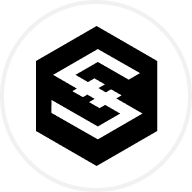En la era digital, las restricciones y la censura no deberían obstaculizar el acceso a la información. Sin embargo, la gobernanza autocrática y la censura permanente han dificultado la libre obtención de conocimientos. Esto ha creado una demanda de una plataforma descentralizada que permita a los usuarios adquirir información sin limitaciones. Everipedia (IQ) es la solución que responde a esta necesidad.
Qué es Everipedia
Everipedia es una red de conocimiento completa e inclusiva que ofrece una plataforma para que los usuarios exploren, participen y contribuyan a una amplia gama de temas. Como enciclopedia basada en blockchain, proporciona un repositorio donde las personas pueden compartir sus pensamientos y opiniones.
El objetivo principal de Everipedia es crear una infraestructura sostenible que permita el acceso sin fisuras a la información para todo el mundo. Pretende derribar las barreras existentes al conocimiento, garantizando que los usuarios dispongan de una completa biblioteca de información sin ningún tipo de restricción o censura.
Aunque similar a Wikipedia en su naturaleza colaborativa, Everipedia va más allá al introducir una oportunidad para que los colaboradores ganen dinero. Mediante el aprovechamiento de una serie de herramientas y aplicaciones descentralizadas (DApps) como PredlQT, HilQT, y Everipedia OraQcles, la plataforma se esfuerza por establecer una red verdaderamente descentralizada.
El equipo de Everipedia
El equipo de Everipedia está formado por Travis Moore, Theodor Forselius y Sam Kiazeman, que han desempeñado un papel fundamental en el desarrollo de la plataforma. Inspirándose en el concepto de Wikipedia, el mayor repositorio de conocimientos del mundo, estas personas se propusieron crear una versión mejorada y totalmente descentralizada.
Además del equipo central, Everipedia cuenta con el apoyo de profesionales dedicados que contribuyen con su experiencia en diversas capacidades. Juntos, trabajan para proporcionar a los usuarios un acceso a la información fluido, cómodo y sin restricciones.
¿Cómo funciona Everipedia?
Everipedia funciona como una alternativa a Wikipedia basada en blockchain, utilizando la cadena EOS. Permite a los usuarios aportar información verificable, precisa y respaldada por fuentes fiables. Everipedia funciona a través de un sistema de triple módulo que abarca los módulos de gobernanza, fichas y presentación.
Además, Everipedia incorpora la DApp PredlQT, que sirve como un mercado de predicción donde los usuarios pueden hacer predicciones sobre eventos futuros y ganar recompensas basadas en la exactitud de sus predicciones.
Aunque la plataforma mantiene la descentralización, hace especial hincapié en garantizar la exactitud de la información disponible. Un equipo de editores revisa diligentemente cada contenido enviado, asegurándose de que sólo se publica información respaldada por fuentes creíbles.
Para disuadir a los malintencionados, Everipedia exige a los posibles colaboradores que destinen parte de sus fondos a la red, lo que desalienta los comportamientos poco éticos y refuerza la integridad de la plataforma.
IQ: El token nativo de Everipedia
El token nativo de Everipedia es IQ, que sirve como herramienta de recompensa para los participantes y colaboradores de la red. Los usuarios reciben un porcentaje como incentivo por realizar tareas en Everipedia.
Además, IQ tiene capacidades comerciales, permitiendo a los usuarios comprar y vender los tokens.
IQ es una herramienta de recompensa y comercio y un token de gobernanza. Los titulares de tokens IQ reciben derechos de voto, lo que les permite participar activamente en los procesos de toma de decisiones de la plataforma Everipedia. Además, los tokens IQ pueden ser estacados, sirviendo para fines de staking dentro de la red.
Tokenomics de IQ
Hay una oferta máxima y circulante de 21.000 millones y 11.100 millones, respectivamente. IQ permite a los usuarios contribuir a la plataforma y es un token de recompensa. Es una parte poderosa y central de la plataforma Everipedia.
Casos de uso de IQ
IQ sirve para múltiples casos de uso dentro de la red. Como token de gobernanza, otorga a sus titulares el derecho a votar en asuntos relacionados con la red. Además, IQ recompensa a los editores y colaboradores que desempeñan un papel importante en el desarrollo de la red. Además, se puede apostar para obtener recompensas, lo que permite a los titulares de los tokens beneficiarse de su participación y apoyo.
Distribución de IQ
La distribución de las fichas IQ es la siguiente:
- El 51 % de los tokens se entregaron a los titulares de EOS.
- El 15,7 % se asignó a fundadores y primeros partidarios.
- El 14,7 % estaba en manos de EOS VC.
- El Tesoro mantuvo el 10 %.
- El fondo IQ poseía el 5 %.
- 3,6 % se reservan para el desarrollo futuro.
El futuro de Everipedia
El futuro de Everipedia parece prometedor, ya que el equipo se centra en integrar más herramientas y editores para garantizar una información precisa y verificable. Están comprometidos a mantener los más altos estándares de fiabilidad de la información, como demuestran sus planes para implementar herramientas avanzadas de verificación.
Con pocos competidores directos, Everipedia ocupa una posición destacada en el espacio. El proyecto ha cosechado una atención positiva, y a medida que forjan asociaciones estratégicas y fomentan relaciones sólidas, es evidente que Everipedia está aquí a largo plazo.

















